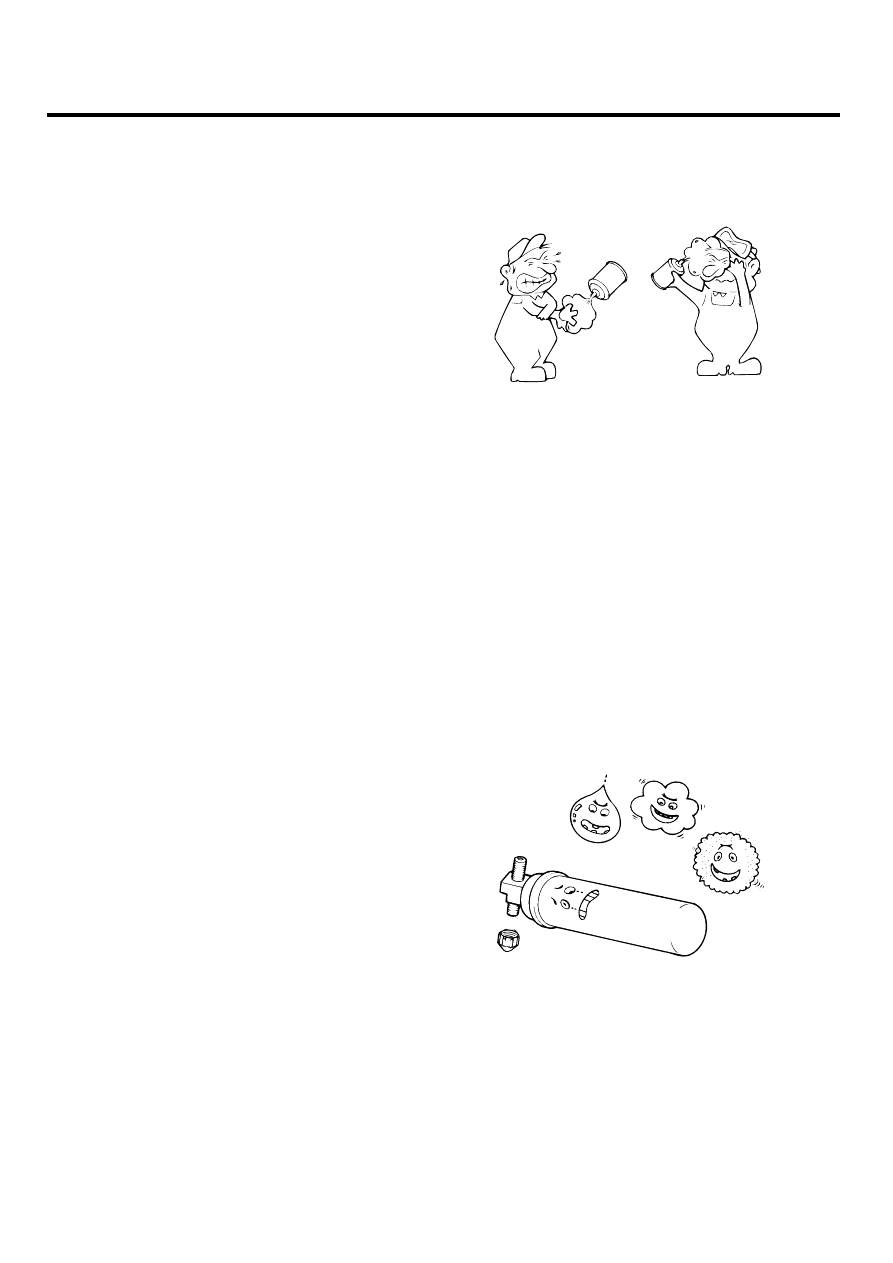Hyundai Santa Fe (2006 year). Manual - part 657

HA -6
HEATING, VENTILATION AND AIR CONDITIONING
AIR CONDITIONING
SYSTEM
INSTRUCTIONS
E3BA7FFA
WHEN HANDLING REFRIGERANT
1.
R-134a liquid refrigerant is highly volatile. A drop on
the skin of your hand could result in localized frostbite.
When handling the refrigerant, be sure to wear gloves.
2.
It is standard practice to wear goggles or glasses to
protect your eyes, and gloves to protect your hands.
If the refrigerant splashes into your eyes, wash them
with clean water immediately.
3.
The R-134a container is highly pressurized. Never
leave it in a hot place, and check that the storage
temperature is below 52℃ (126℉)
4.
An electronic leak detector should be used to check
the system for refrigerant leakage. Bear in mind that
the R-134a, upon coming into contact with flame, pro-
duces phosgene, a highly toxic gas.
5.
Use only recommended the lubricant for R-134a sys-
tems. If lubricants other than the recommended one
used, system failure may occur.
6.
PAG lubricant absorbs moisture from the atmosphere
at a rapid rate, therefore the following precautions
must be observed:
-
When removing refrigerant components from a
vehicle, cap immediately the components to pre-
vent from the entry of moisture.
-
When installing refrigerant components to a ve-
hicle, do not remove the cap until just before con-
necting the components.
-
Complete the connection of all refrigerant tubes
and hoses without delay to prevent the A/C sys-
tem from taking on moisture.
-
Use the recommended lubricant from a sealed
container only.
7.
If an accidental discharge in the system occurs, ven-
tilate the work area before resuming service.
LQAC003A
WHEN REPLACING PARTS ON A/C SYSTEM
1.
Never open or loosen a connection before discharging
the system.
2.
Seal the open fittings of components with a cap or
plug immediately to prevent intrusion of moisture or
dust.
3.
Do not remove the sealing caps from a replacement
component until it is ready to be installed.
4.
Before connecting an open fitting, always install a new
sealing ring. Coat the fitting and seal with refrigerant
oil before making the connection.
Moisture
Dust
Plug
LQAC003B